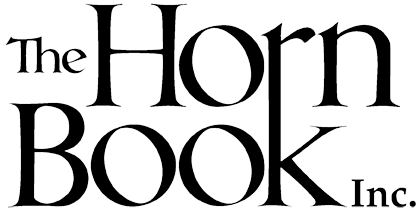Five questions for E. K. Johnston
Titan of the Stars (Tundra, 14–17 years) is set in the future on a spaceship en route to Mars. Elements, including the social dynamics, may remind readers of the Titanic…but the danger for these passengers arises from space aliens discovered in a melting tundra; presumed to be dead, they’ve escaped from their cases.
Titan of the Stars (Tundra, 14–17 years) is set in the future on a spaceship en route to Mars. Elements, including the social dynamics, may remind readers of the Titanic…but the danger for these passengers arises from space aliens discovered in a melting tundra; presumed to be dead, they’ve escaped from their cases. For more stories of possible futures, see also our list "Future worlds" in this issue of Notes.
1. How were you inspired to set a Titanic-like story in space?
 |
| Photo courtesy of E. K. Johnston. |
E. K. Johnston: So…technically, I wasn’t. Titan of the Stars was written for Inked Entertainment, and it was [founder and CEO] David Purse who asked for “the Titanic, but also Alien.” He gave me a rough outline, and I sat with it for a couple of days, moving parts around. I definitely read books about the Titanic in the early nineties, and I love how it shows up in stories (Doctor Who; Downton Abbey; there’s even a reference to the James Cameron movie in Britney Spears’s “Oops!…I Did It Again”), and I was excited at the idea of being able to write my own. The real hook for me, though, was the Alien part. I had never written horror before, and I was excited to try. When David and I spoke, I had about fourteen changes I wanted to make to his proposal, and he was enthusiastic about all of them. That was the most inspiring part: collaborating with someone who was so excited for me to take his ideas and run with them. When we sold the book to [Tundra editor] Peter Phillips, he was also excited about the horror elements, so we were off to the races.
2. What elements of this story did you know going in, and/or what surprised you as you were developing it?
EKJ: This is sort of unusual for me, but I knew everything going in. I wasn’t sure how some of it was going to happen (separating Ren and Celeste, for example), but I figured that out as I drafted. Which is not to say I had a detailed outline (I had a summary), but the thing about spaceships is that you have a pretty strict timeline and very limited resources to work with, so coloring outside the lines isn’t an option for the characters the way it is in other books. I did switch the medical bay and hydroponics about four times, though. I am almost sure they ended up in the correct places on the ship.
3. How do you plan out your pacing? (We were on the edges of our seats!)
EKJ: You might be the first people who have ever said that. Thank you!
I do most of my planning, such as it is, in the revision stage. The technique is called “reverse outlining,” and I used John Truby’s 22 Steps (from The Anatomy of Story: 22 Steps to Becoming a Master Storyteller) as a format. You can do this before you write the book, but I prefer to have a first draft in hand. Basically, I write down the twenty-two steps and then slot the book’s events into place around them. If there’s a weak spot or a gap, it becomes pretty apparent. Aside from that, I tend to be an intuitive writer. I don’t use plot maps or really strict story elements. I used to think that this made me a fake, or something equally silly, but then a friend pointed out that I do do the work, I just do most of it in my head. It’s always going to look different for each writer.
 4. Talk to us about casual queer representation in your sci-fi.
4. Talk to us about casual queer representation in your sci-fi.
EKJ: As a queer person without a “short answer” about my identity, my writing tends to gravitate more toward stories where queer characters simply exist. (There’s nothing simple about it, obviously; it’s an uphill fight for every word on the page.) It’s how I move through and see the world, and I like sharing that vision with readers, both as a statement of intent and as an example of another legitimate path. That second one is especially important when you write for kids and teens, because they’re still building their world, and they don’t necessarily know all of their options. It’s not an effort for me to write queer-normative worlds, because that’s how it could be in real life.
5. Given the chance, would you move to Mars?
EKJ: Absolutely not. I think at this stage in Earth’s history, colonizing Mars is actually extremely unethical. Space research is important for a lot of things (the easiest example is Velcro), but we already have a planet. We’d be much better off implementing climate solutions here than spending almost incalculable resources on what would definitely be a very uncomfortable existence on Mars. A lot of the stuff we think about as being useful in a Mars colony situation would actually be very, very good on Earth (vertical farming, for example). Yes, it feels great emotionally to rescue Matt Damon, but in terms of practicality, I’ll choose Earth every time.
From the June 2025 issue of Notes from the Horn Book.
RELATED
ALREADY A SUBSCRIBER? LOG IN
We are currently offering this content for free. Sign up now to activate your personal profile, where you can save articles for future viewing.







Add Comment :-
Be the first reader to comment.
Comment Policy:
Comment should not be empty !!!